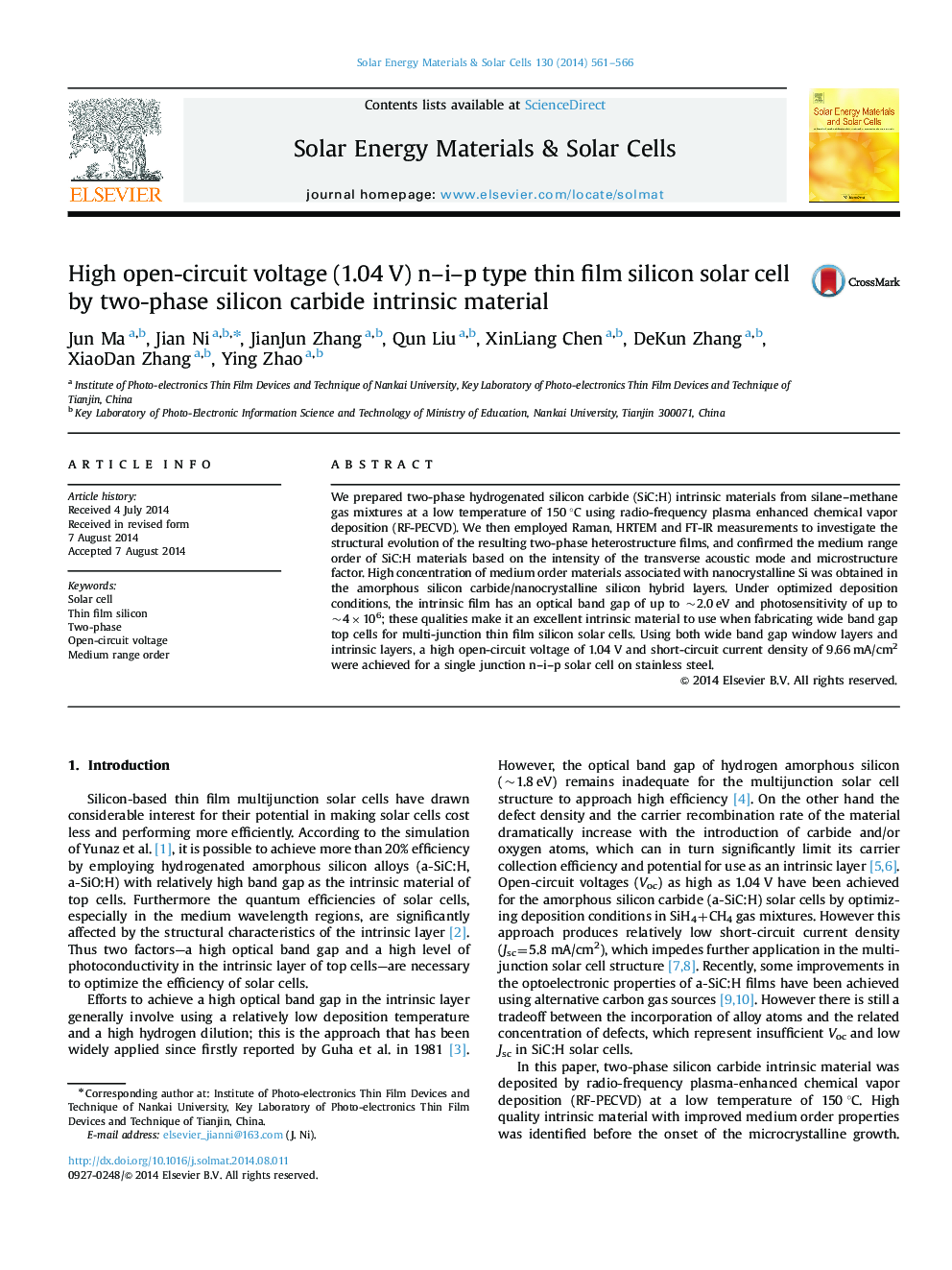| Article ID | Journal | Published Year | Pages | File Type |
|---|---|---|---|---|
| 6535631 | Solar Energy Materials and Solar Cells | 2014 | 6 Pages |
Abstract
We prepared two-phase hydrogenated silicon carbide (SiC:H) intrinsic materials from silane-methane gas mixtures at a low temperature of 150 °C using radio-frequency plasma enhanced chemical vapor deposition (RF-PECVD). We then employed Raman, HRTEM and FT-IR measurements to investigate the structural evolution of the resulting two-phase heterostructure films, and confirmed the medium range order of SiC:H materials based on the intensity of the transverse acoustic mode and microstructure factor. High concentration of medium order materials associated with nanocrystalline Si was obtained in the amorphous silicon carbide/nanocrystalline silicon hybrid layers. Under optimized deposition conditions, the intrinsic film has an optical band gap of up to ~2.0 eV and photosensitivity of up to ~4Ã106; these qualities make it an excellent intrinsic material to use when fabricating wide band gap top cells for multi-junction thin film silicon solar cells. Using both wide band gap window layers and intrinsic layers, a high open-circuit voltage of 1.04 V and short-circuit current density of 9.66 mA/cm2 were achieved for a single junction n-i-p solar cell on stainless steel.
Related Topics
Physical Sciences and Engineering
Chemical Engineering
Catalysis
Authors
Jun Ma, Jian Ni, JianJun Zhang, Qun Liu, XinLiang Chen, DeKun Zhang, XiaoDan Zhang, Ying Zhao,
